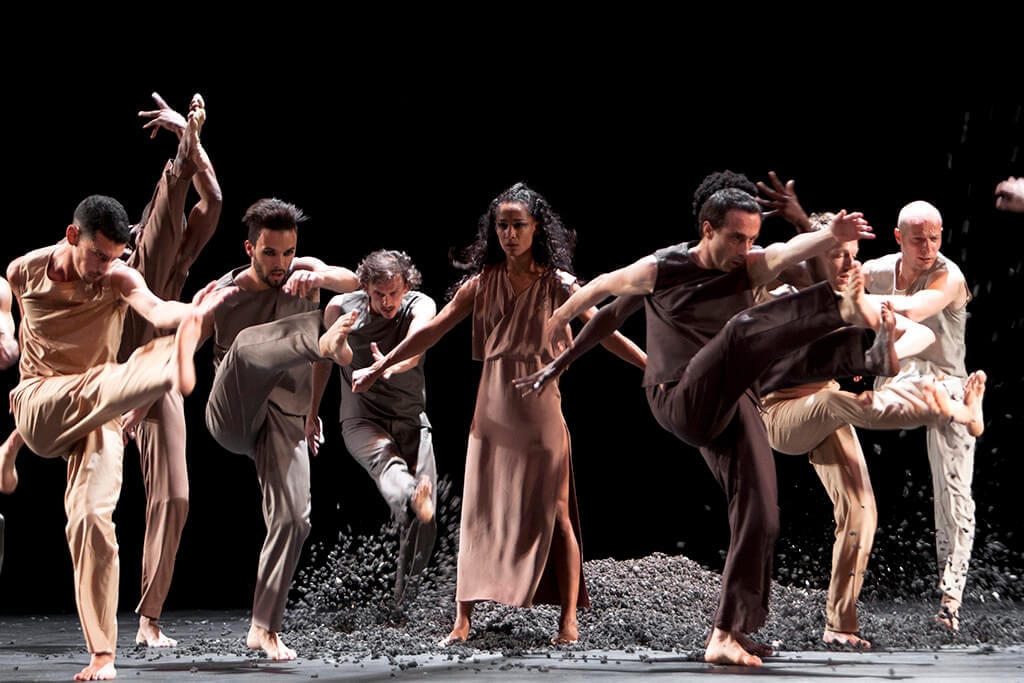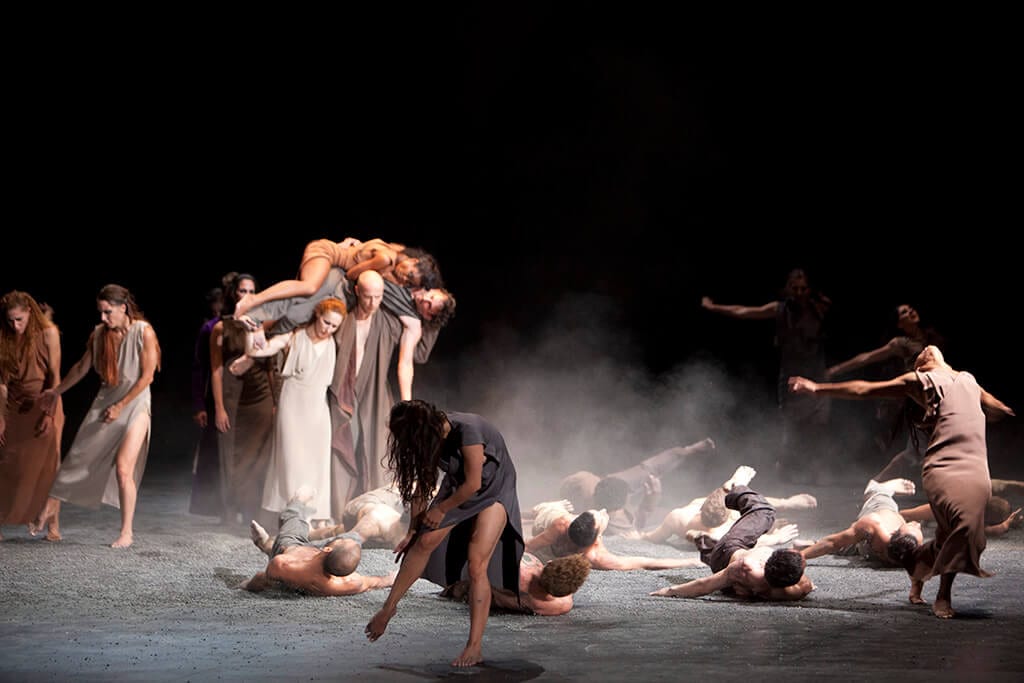Of all the three pieces in Sasha Waltz Sacre, the one I found most difficult to emotionally engage with was the title and last piece, Sacre, set to Stravinsky’s Rites of Spring. Waltz doesn’t take the archetypal or historical route, so there are no masks, no animals and no Russian peasants. It is, in its shaping, with superb lifts, three formation jumps, quite a modern interpretation. As we close in on the sacrifice, a huge inverted spear descends ever further. This is the arena of the sacrifice.
In a complex narrative ballet such as, for instance, Swan Lake, a choreographer has, it seems, a wide choice of options he/she can take. Music permitting, he/she can decide what to give greater weightage to and what to diminish in scale. In a single trajectory narrative such as Rites, where the object of sacrifice is the story, how do you go about creating something new? What Waltz offers are two children – the children of the sacrificial woman, we assume, who are forced to watch, and by so doing, participate in the sacrifice. Additionally, she presents a sacrifice victim who undrapes to nakedness; a glory the baying crowds bow down before. Whilst this ‘twist’ seemed to win over much of the Sadler’s Wells crowd, I wasn’t convinced. The inclusion of children is, I feel, a bid to sentimentality. And for the nakedness to have power, we must, in the moment of revelation, feel it is unstaged. Furthermore, I think I detected a nude bra and pants, which if true, would further mitigate the boldness of the woman’s act and thereby, the crowd’s response. I could be wrong, but the suspicion, once born, is hard to quell.
The piece opens with a fog-lit stage and a couple rolling together in love/lust. The coercion and the brutality of the mob push a sacrificial woman centre stage. Although the often discordant and heavily angry score would seem to demand a fervid choreography, the galley slave movement of bodies, the high priestesses with their arms raised, the conspicuous panting, all missed their mark for me. This is a pity as the other two pieces which preceded this one had much that pulled me in. The first piece, set to Debussy’s L’Après-midi d’une faune, is, at only twelve minutes long, the shortest of the three. It is a story of desire, in its many forms. There are couples who pulsate to the music, swing high and low and form intricate Picasso like shapes with their bodies, a man who pushes another man to a woman, and one wonders whether his desire is for money or whether his desire is that of a voyeur. There is rough sex at the back of the stage and a gentle romantic love towards the front, where the dancers, languid in their moves and their moves towards one another are dressed like bathers from a 1920s Vogue shoot. When the stage is filled with dancers, their movements are vibrant and athletic and they are dressed like gymnasts from the East European Communist belt, circa 1970s. Just when I begin to think that this athleticism is Waltz’ defining oeuvre, she pulls a surprise with her second piece.
Scène d’Amour, a classically structured short ballet using Berlioz’s Roméo et Juliette, is my favourite piece of the evening. Not only is the choreography here superb, but so too are the dancers: Lorena Justribo Manion and Ygal Tsur. While the overall structure is delicate and clean, there are wondrous touches of the modern which transform the love-making from a serious endeavour into a playful act. For instance, the use of mime movements, and the empowering of women, so that when the man is lying down, it is the woman who tries to raise him up using her feet with small soft karate like chops. And though there are moments when he, the traditional male, lifts her, there is one instant when she lifts him, his legs held out into an upside down ‘v’, not as a burden nor a spoil but a thing that is hers to relish, pick up perhaps and even throw in play.
Sacre is a good show, with moments of greatness wedded to it.






